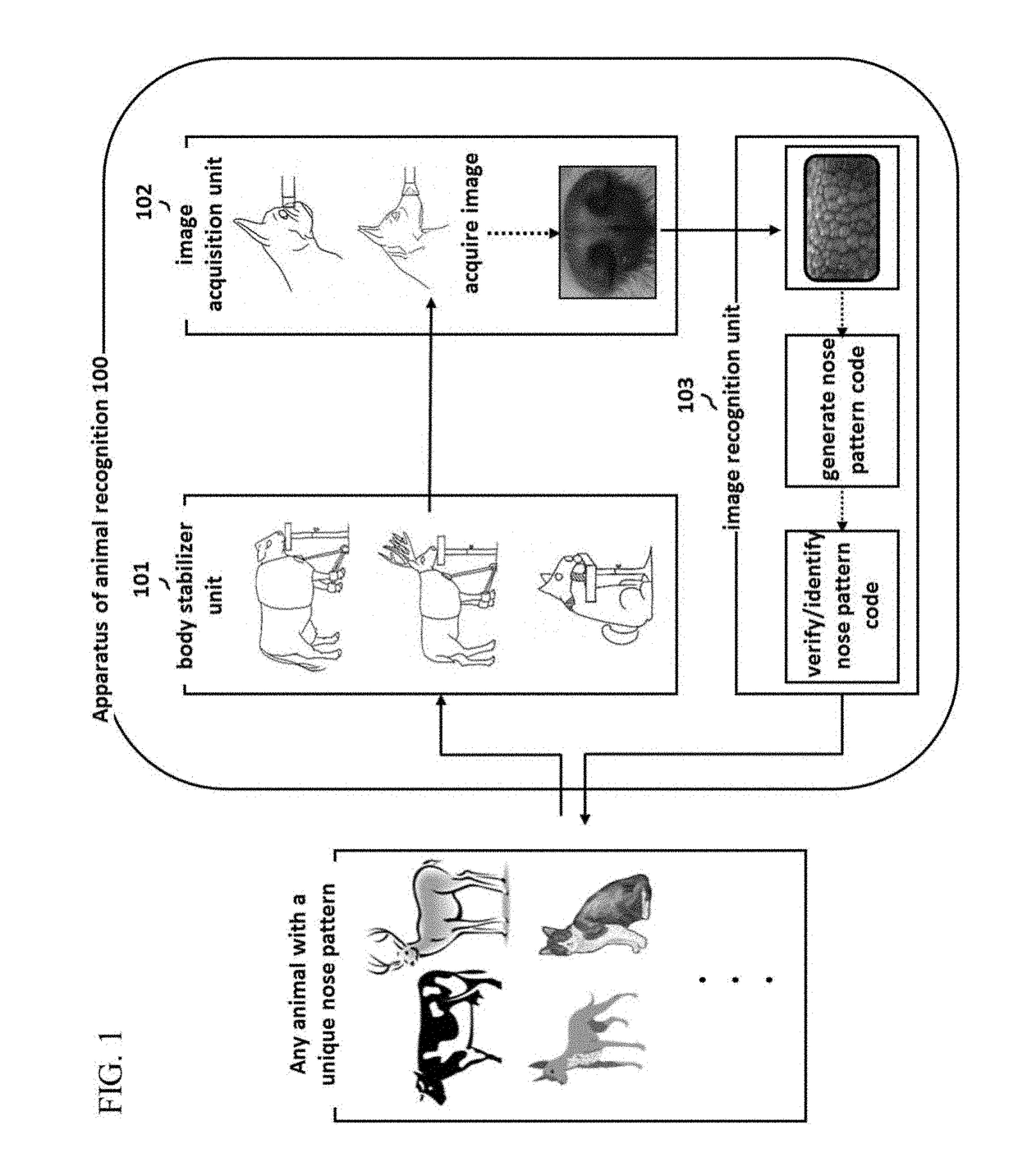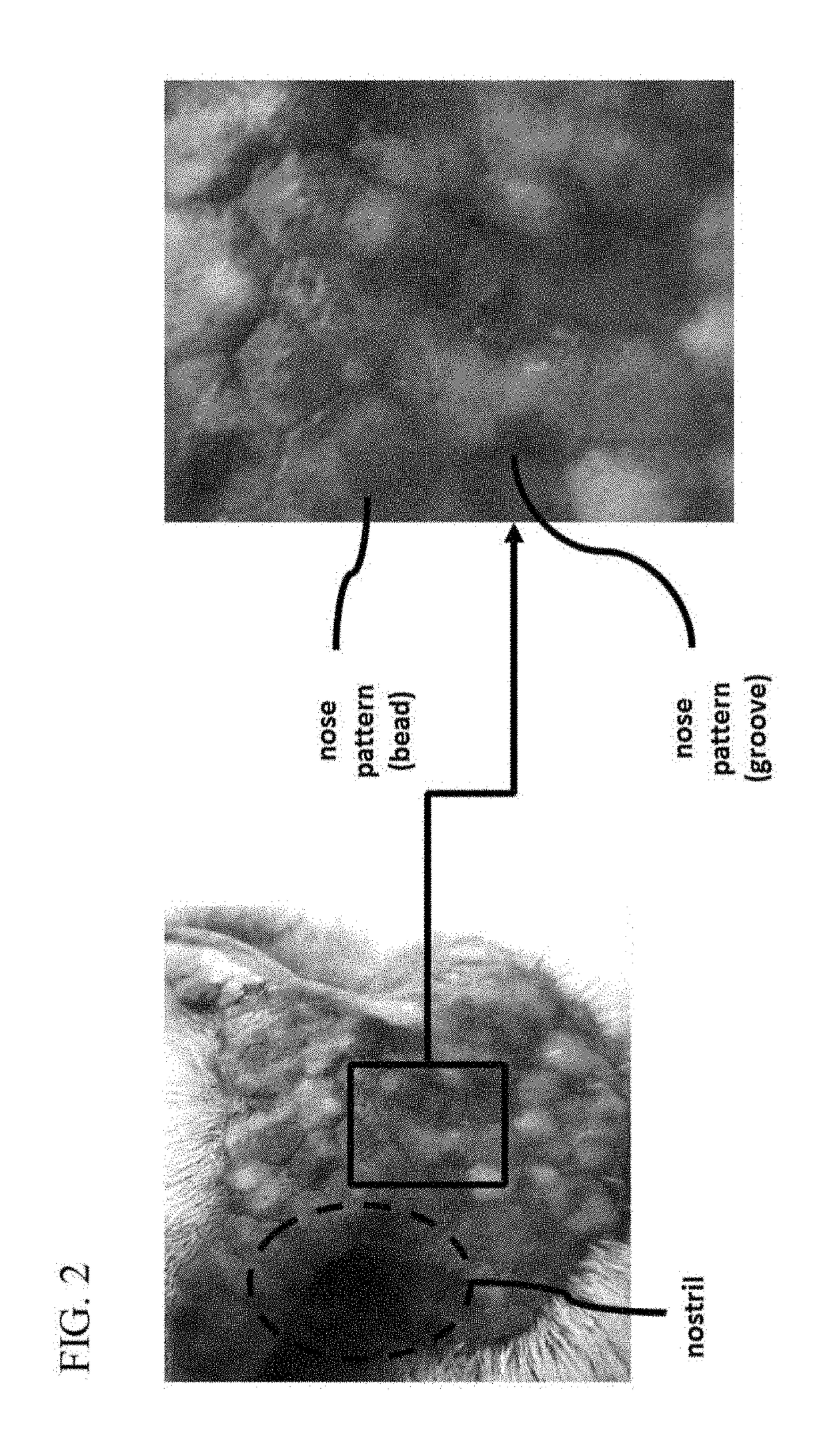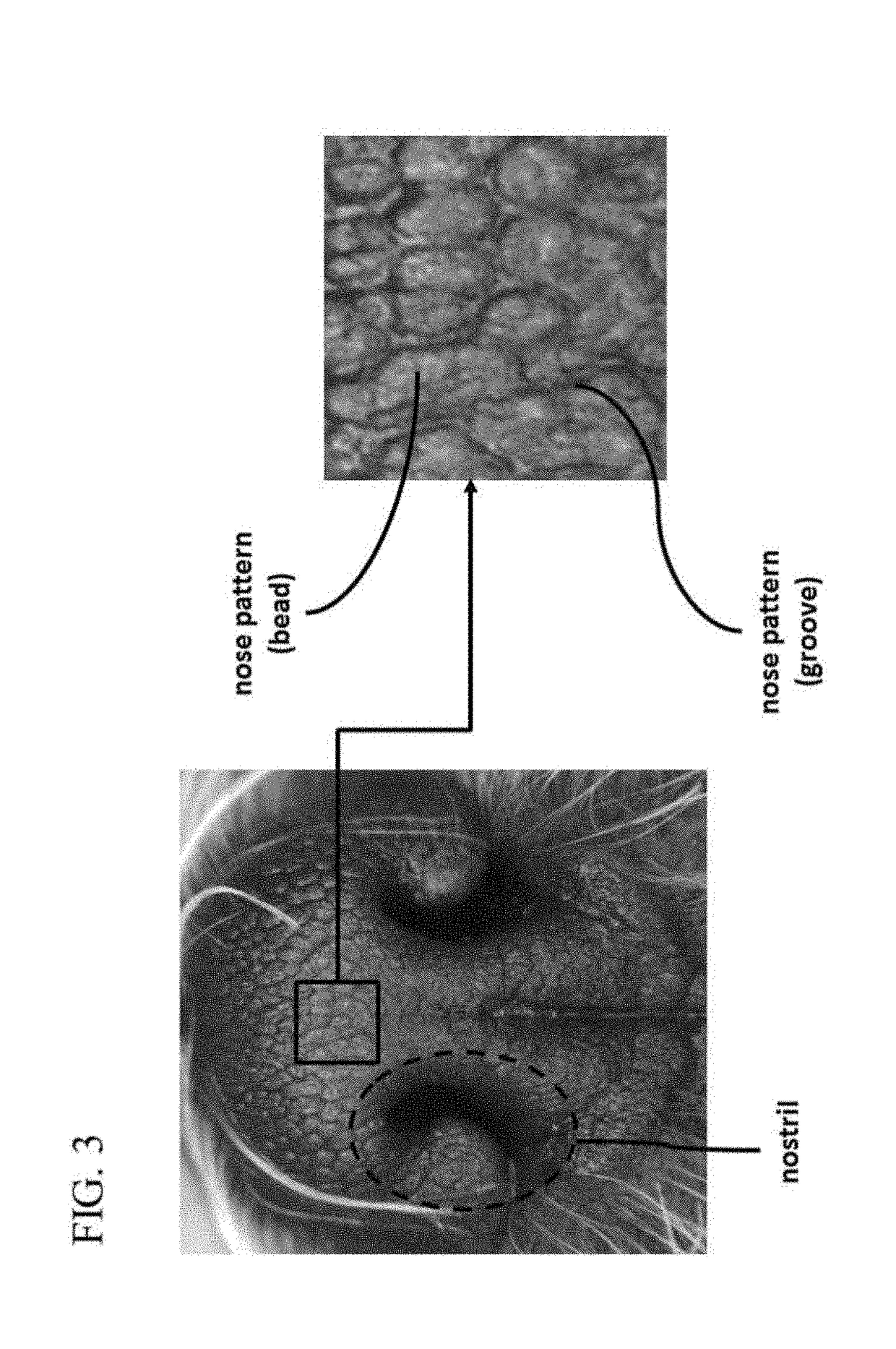Device and method for recognizing animal's identity by using animal nose prints
a technology of animal nose and facial expression, applied in the field of facial expression and facial expression recognition, can solve the problems of needless or painful modifications or attachments to the animal's body, spreading mad cow disease epidemics, putting animals and the necessary professional handlers in the danger's way, etc., to achieve fast and accurate recognition of animals, reduce obstructive movements, and good quality
- Summary
- Abstract
- Description
- Claims
- Application Information
AI Technical Summary
Benefits of technology
Problems solved by technology
Method used
Image
Examples
example
Gabor Sine Transform
[0242](A) Simple Matching
[0243]For a ROI, let C denote a frequency transform code from the ROI and M a masking code from the ROI generated by Gabor Sine transform. Then, the nose pattern code for ROI A consists of N bits of frequency transform code C1 and N bits of masking code M1, and the nose pattern code for ROI B consists of N bits of frequency transform code C2 and N bits of masking code M2.
[0244]The distance (D) between two nose pattern codes can be computed by Equation (7).
D=(C1XORC2)AND(M1ANDM2)M1ANDM2(Equation7)
[0245]In Equation (7), XOR denotes the operator of bitwise Exclusive-OR, AND the operator of bitwise AND. The number of bits whose value is 1 in the array of bits A is denoted by |A|.
[0246]When the above computed distance is less than the given threshold, it is concluded that the two animal subjects represented by those two nose pattern codes are identical, and they are different individuals otherwise.
[0247](B) Shift Matching
[0248]For a local regi...
PUM
 Login to View More
Login to View More Abstract
Description
Claims
Application Information
 Login to View More
Login to View More - R&D
- Intellectual Property
- Life Sciences
- Materials
- Tech Scout
- Unparalleled Data Quality
- Higher Quality Content
- 60% Fewer Hallucinations
Browse by: Latest US Patents, China's latest patents, Technical Efficacy Thesaurus, Application Domain, Technology Topic, Popular Technical Reports.
© 2025 PatSnap. All rights reserved.Legal|Privacy policy|Modern Slavery Act Transparency Statement|Sitemap|About US| Contact US: help@patsnap.com



